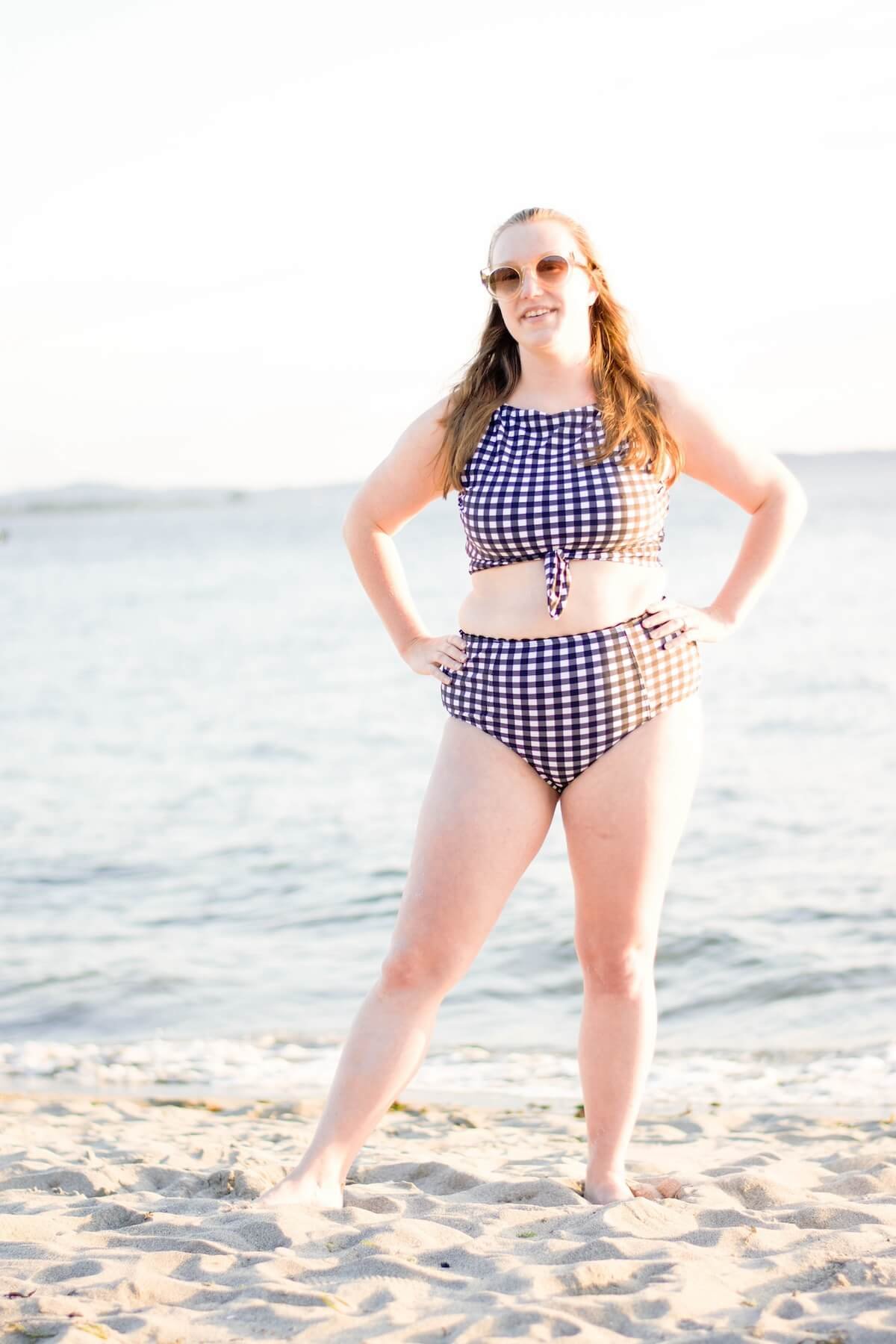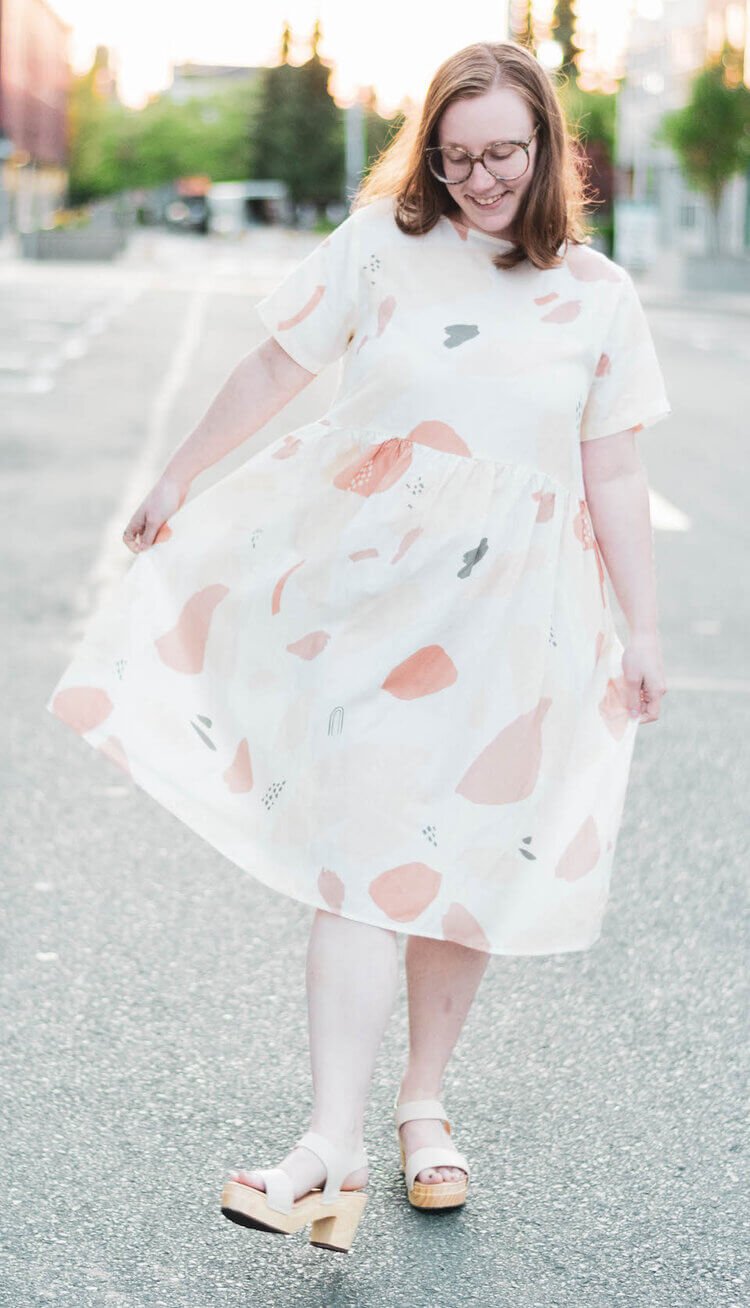6 Affordable Sustainable Swimsuit Brands with Options Under $100
T-shirts, dresses, shoes, and the like are not the only fast fashion items: swimsuits are too – arguably even more so because they are regularly used and subjected to sun, salt, water, and chlorine.
Given these factors plus being made with cheap materials, it’s not surprising swimwear doesn’t last and might need to be replaced almost every summer.
This guide will break down the negative impacts of mass produced swimwear and help you find some sustainable swimwear brands that feature more affordable options under $100.
Pin this budget-friendly swimsuit guide for later!
Let’s dive into a list of affordable eco-friendly swimwear brands, explore what materials to look for when shopping for a sustainable swimsuit, and about the environmental impact of mass produced swimwear.
6 Affordable Sustainable Swimsuit Brands Under $100
If you're ready to find a bathing suit made with sustainable materials, these eco-friendly brands focus on creating some of the best sustainable swimwear through a transparent supply chain.
Due to the higher price point of sustainable swimwear brands, this affordable sustainable swimwear list is focusing on brands that have bikini separates and one piece options for under $100.
This post does contain some affiliate links which means The Honest Consumer may receive a commission if you decided to purchase. Our commission is at no additional expense to you!
classic bikini’s by Colieco
Price Range: $26-$59.
Size Range: 2XS-3XL
ColieCo produces ethically made, sustainable lingerie, underwear and swimwear in an in-house studio in Sagres, Portugal. This ethical brand carefully-selects natural, recycled and reclaimed fabrics; manufactures to order and uses intelligent garment design and cutting processes to minimize textile waste.
Their swimsuits are made from Reclaimed Italian knit lycra upcycled from luxury swimwear industry deaadstock.
I personally have some underwear from ColieCo. which I love, so I’m sure their swimwear is amazing too!
Kitty & Vibe’s Affordable Recycled Bikini’s & One Piece Suits
Price Range: $38-$128
Size Range: XS-4XL
With Kitty & Vibe’s variety of funky and colorful patterns and designs for all body types, you’re bound to find the perfect fit for the beach or pool. Their unique patterned swimwear is made from recycled polyester and X-Life Lycra.
Kitty & Vibe has earned Environmental Management System ISO 14001:2015 certification and their factory workers in Bogota, Colombia are paid above minimum wage and provided with retirement plans and healthcare.
Kitty & Vibe's swimwear line is unique because their bikini bottoms feature two sizes allowing for more or less coverage.
I personally own a couple bikinis from Kitty & Vibe. I love the fun designs, coverage, and how well made they are.
Sensi Graves Recycled Swimwear & Leggings
Price Range: $65-$120
Size Range: XS-2XL
Started by a woman with plenty of experience in the water, professional kiteboarder Sensi Graves, her line of swimwear is made from a blend of high-quality spandex and REPREVE® or ECONYL®.
Hand tags, labels, and packaging are also made from recycled materials and 1% of sales are donated to environmental groups. Fabric is sourced from Portland, Los Angeles, and Italy, and then manufactured in Portland or LA.
Wolven’s Bold Print Swimsuits
Price Range: $36-$154
Size Range: XS-XL
Wolven is a BIPOC, female-founded brand whose mission is to promote environmental protection, community, and inclusivity through stand out clothing that not only lets you look good, but feel good while wearing it. Wolven prides itself on designing stand-out styles that are made from recycled materials.
Their fabric is made from BPA-Free recycled bottles that are transformed into soft, sexy sustainable clothes that you can be proud to wear. Their swimwear features one pieces, bikinis, & high waisted options
Wolven also off-sets their carbon footprint and donates 1% of their annual revenue to environmental and community organizations.
Girlfriend Collective’s Size Inclusive Swimwear Made from Recycled Materials
Price Range: $45-$90
Size Range: XXS-6XL
Whether you’re looking for one-piece suits or a bikini, Girlfriend Collective has both in a variety of unique cuts – and you can mix and match your bikini bottoms and tops.
Boasting swimwear for all shapes and sizes, the fabric is made from ECONYL® and dyed with eco-friendly dyes. Packaging is 100% recycled and recyclable and they sell microfiber filters that you can attach to your washing machine.
Girlfriend Collective’s core factory is situated in Vietnam and is SA8000 certified. And with their take-back scheme ReGirlfriend, you can send in old pieces for them to recycle into new garments.
Girlfriend Collective's swimwear is a great option for ladies who love vibrant colors.
prAna’s Fair Trade Swimwear
Price Range: $60-$110
Size Range: XS-XL
Boasting pretty patterns and prints along with versatile cuts and designs, prAna’s bikinis, tankinis, and one-pieces for women are super stylish and, since they’re made with a blend of ECONYL® and LYCRA®, sustainable too. They also offer men’s swim trunks.
Select swimwear is also made in a Fair Trade Certified factory.
They also have reversible options, giving you more bang for your bikini. To eliminate plastic packaging, prAna uses a roll-pack method or an FSC-certified paper bag.
For their labeling tags, they use 100% recycled paper and their orders are sealed with recyclable paper tape.
Their swimwear features options for men and women.
What is the Negative Environmental Impact of Mass Produced Swimsuits?
Because it is cheaply and quickly made a lot of swimwear, much like other clothing, ends up in landfills too soon and too often.
Since swimwear is predominantly made from synthetic fabrics like polyester, nylon, and spandex (also known as elastane or by the brand name LYCRA®), it can take hundreds of years to biodegrade.
But the problem starts at the beginning of your swimsuit’s lifespan, since synthetic fabrics are a form of plastic and thus derived from fossil fuels.
Water & Energy Intensive Process
Turning fossil fuels into plastic and then into fibers is a water and energy intensive process that depletes non-renewable resources and contributes to global carbon emissions that exacerbate human-induced climate change; while textile dyeing contributes to water pollution because the leftover water from the dyeing process is dumped into waterways.
And swimwear has an impact while you are using it too since your one-pieces and bikinis release Microplastics when washed and even while you’re swimming in the ocean or your pool.
Low Quality Materials & Plastic
The tricky thing with swimwear is that it’s difficult ditching the synthetic materials. You’d be hard put to find a swimsuit made without it; even if you do, it may not be able to endure regular use or the harsh impacts of sun, salt, water, and chlorine.
While synthetics are certainly popular because they’re cheap, they’re also versatile, water-wicking, and stretchy, important features for swimwear. On top of which, polyester is chlorine-resistant.
So while you can try to avoid swimwear made with synthetic materials, you can’t count on it lasting long – especially not if you’re a regular or competitive swimmer – and you’ll have to chuck it soon, which is just as bad.
What Materials Should You Look for in Sustainable Swimsuits?
What you can do to assuage the negative environmental impact is look for swimwear made from recycled synthetics like discarded fishing nets and plastic water bottles. This keeps plastic waste out of waterways, landfills, and incinerators, and negates the demand for virgin resources.
The industry has responded to this by creating recycled synthetic fabrics such as ECONYL®. Made from regenerated nylon fiber out of recycled plastics like discarded fishing nets, industrial plastic waste, and recycled PET bottles, ECONYL® is long-lasting, pill-resistant, and reduce a swimsuit’s carbon footprint by up to 80%.
REPREVE® is another option, as this is a recycled polyester fabric made from plastic bottles. If you opt for swimwear made from natural fibers like hemp keep it for casual days around the pool or tanning on the beach.
Be sure to take good care of your swimsuit like gently washing it by hand and line-drying it. This lowers the environmental impact AND ensures it lasts longer.
Why is Sustainable Swimwear More Expensive?
The downside to sustainable swimwear can be its price tag. A sustainable brand will be passionate about using quality fabric to make small batches of swimwear made to last.
Smaller profit margins – not to mention the fact that well-made swimwear means you won’t need to replace it as quickly – increases the price tag.
Sometimes you may be paying for a brand name – or the idea that what they’re doing is unique.
Bear in mind that the technology of making recycled fabrics is not new and was created by fabric manufacturers, not brands. Some may trademark their fibers, thus pushing up the price.
While an expensive piece that is well-made and will last can be a worthwhile investment – after all, if you’re buying the cheap stuff, you’ll likely fork out the same amount having to constantly replace your pieces – it’s also worth seeking brands that are transparent about sourcing, manufacturing, distribution, and their price tag.
Also, don't forget the price of labor contributes to the price the end consumer pays.
When you choose to shop ethical swimwear brands they are paying their garment workers a living wage. Unlike fast fashion brands who do not pay fair wages or have ethical production practices.
This is one of the key differences that plays into the higher price of eco-friendly swimsuits.
Hopefully this guide has given you some ideas of what to look for in a sustainable bikini and encouraged you to check out some of these sustainable brands making a positive impact.
For more tips & tricks on sustainable living be sure to follow The Honest Consumer on social media, subscribe to our newsletter, & check out the Ethical & Sustainable Brand Directory.





















